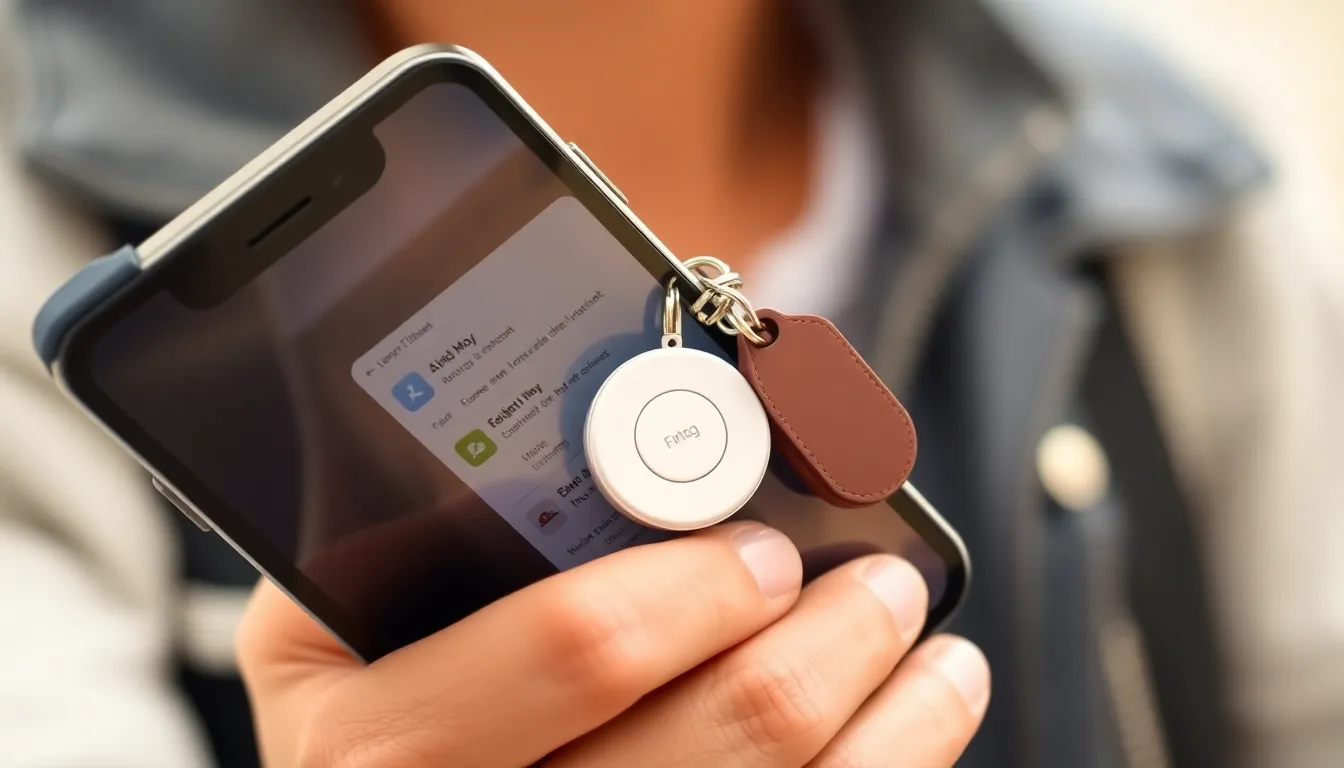Table of Contents
ToggleIn a world where losing your keys feels like a modern-day tragedy, Apple’s AirTag swoops in like a superhero ready to save the day. This nifty little gadget not only helps you track down your belongings but also adds a sprinkle of tech magic to your everyday life. Imagine never having to rummage through your couch cushions or question your sanity when you can simply locate your stuff with a tap on your iPhone.
Understanding AirTag
Apple’s AirTag provides a convenient way to keep track of personal items. Users attach this small, circular device to belongings like keys, bags, or wallets. GPS technology enables precise location tracking via the Find My app on an iPhone.
AirTags utilize Bluetooth Low Energy (BLE) to communicate with nearby Apple devices. This communication helps pinpoint the item’s location on a map. If someone else with an Apple device comes close to a lost AirTag, their phone anonymously relays its location back to the owner via the iCloud network.
Privacy remains a core principle in AirTag’s design. Each AirTag uses a unique identifier that prevents tracking and unauthorized access. Users can locate their items without compromising personal data. Sound alerts assist in locating lost possessions once users are nearby.
Moreover, AirTags have a built-in speaker to emit sound for easier discovery. When searching, individuals can prompt the AirTag to play a sound, making the item easier to locate. Additionally, precision finding integrates AR technology, guiding users visually to the device’s exact location.
Battery life proves essential, with each AirTag containing a replaceable CR2032 lithium coin battery. A single battery lasts around a year, depending on usage. Users receive notifications when the battery requires replacement, ensuring consistent functionality.
Ensuring durability, AirTags come with an IP67 rating for water and dust resistance. This feature allows everyday use without worrying about environmental damage. Users can confidently attach AirTags to their belongings, knowing they withstand typical wear and tear.
Requirements For Adding AirTag

To add an AirTag to an iPhone, certain requirements must be met to ensure seamless functionality and compatibility. Users should verify their device and software specifications before proceeding.
Compatible iPhone Models
Recent iPhones support AirTag integration efficiently. Compatibility includes iPhone models from the iPhone 6s and later. Users with iPhone SE (1st generation) and subsequent models can also utilize AirTags. Additional compatibility extends to newer iPads like the iPad Pro, iPad Air (3rd generation), iPad (5th generation), and iPad mini (5th generation). However, utilizing these devices guarantees the best experience with AirTag features.
Software Version Needed
An updated iOS version is essential for optimal AirTag connectivity. iPhone users must upgrade to at least iOS 14.5 to add and manage AirTags effectively. Performing regular software updates maximizes performance and security. The Settings app allows easy checking of the current software version, ensuring compatibility and access to the latest features. Upgrading enhances the overall user experience with AirTag on their iPhone.
Steps To Add AirTag To iPhone
Adding an AirTag to an iPhone involves a few straightforward steps. Following the correct process ensures a seamless experience in locating items.
Preparing Your AirTag
Start by removing the plastic tab from the AirTag. This tab activates the device. Next, hold the AirTag close to the iPhone. It’s important to ensure the iPhone’s Bluetooth is turned on. The iPhone will recognize the AirTag automatically, enabling you to proceed with the setup. Once recognized, choose the name for your AirTag from the list provided or create a custom name. Confirming the selection completes the initial setup preparation.
Connecting AirTag To Your iPhone
Connecting the AirTag requires a simple process. First, after preparing the AirTag, a prompt appears on the iPhone screen. Tap “Connect” to start pairing. Follow the on-screen instructions to complete the connection. Indicating a specific item helps improve tracking accuracy. Additional features like notifications for battery status and Lost Mode settings become available after setup. Lastly, once connected, the AirTag appears in the Find My app for easy access and tracking whenever needed.
Utilizing AirTag Features
AirTags provide a variety of features to enhance the tracking experience. Users can easily locate misplaced items using simple tools within the Find My app.
Finding Lost Items
Finding lost items becomes straightforward with AirTags. Users can activate Precision Finding when they approach an AirTag. They can see distance and direction information displayed on their iPhone screen. If the item’s exact location remains unclear, users can trigger a sound alert on the AirTag. Utilizing the network of Apple devices, locating an AirTag is often possible even when it’s out of Bluetooth range. Anonymous crowd-sourced data helps relay the AirTag’s position back to the owner. Finding items becomes quick and efficient, minimizing stress associated with lost possessions.
Customizing Your AirTag
Customizing an AirTag enhances personalization. Users can assign unique names to each AirTag, making them easily identifiable. Options for selecting emojis or icons further add a personal touch. Notifications for low battery ensure users stay informed, eliminating uncertainty about the device’s status. Users can also enable Lost Mode, allowing them to receive updates on the AirTag’s location if it gets misplaced. These customization features enable a seamless user experience, tailoring the setup to fit individual needs.
Troubleshooting Common Issues
Users may encounter several issues while adding an AirTag to an iPhone. Device compatibility stands as a primary concern. iPhones from the 6s series and later work seamlessly with AirTags, provided the software is at least iOS 14.5.
Bluetooth connectivity can cause problems, too. Confirm that Bluetooth is enabled on the iPhone. If not responding, toggling Bluetooth off and on might resolve temporary glitches.
Another common issue is the AirTag not appearing during setup. Ensure to remove the plastic tab from the AirTag before attempting to connect. This tab prevents battery contact and must be discarded for the device to function.
If the AirTag becomes unresponsive after initial pairing, replacing the CR2032 battery serves as a simple fix. Users should remember that battery life lasts about a year, so monitoring usage can help prevent inconveniences.
Network connectivity could also hinder functionality. If the AirTag loses connection, checking Wi-Fi and cellular settings is essential. It’s critical that the iPhone maintains an active internet connection for iCloud features to work properly.
Lastly, users can experience issues with finding the AirTag in the Find My app. Multiple AirTags can clutter the display, so organizing and naming them uniquely can enhance user experience. To troubleshoot, opening the Find My app and refreshing the location may provide immediate results.
By examining these common issues, users can determine quick fixes to enhance their AirTag experience with an iPhone.
Adding an AirTag to an iPhone is a straightforward process that enhances the ability to keep track of personal belongings. With features like Precision Finding and sound alerts users can locate their items quickly and easily. The seamless integration with the Find My app ensures that lost items can be tracked even when they’re out of Bluetooth range.
By customizing AirTags and utilizing the various settings available users can tailor their tracking experience. Regular maintenance such as battery checks and software updates will ensure optimal performance. Embracing this technology not only reduces the stress of losing items but also adds a layer of convenience to everyday life.




